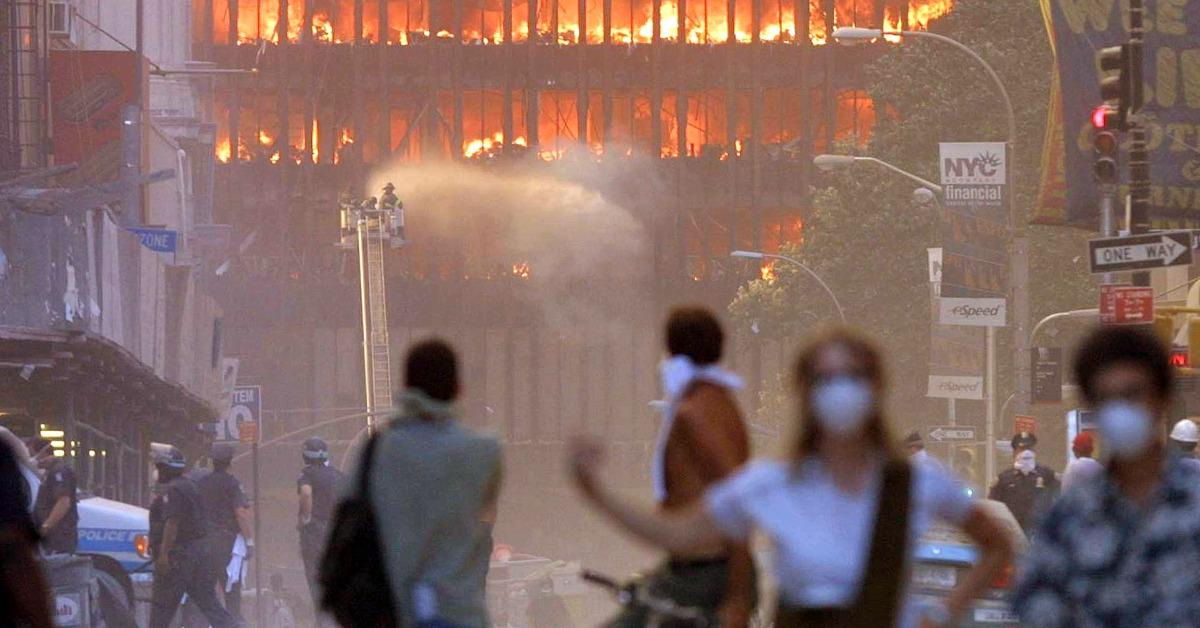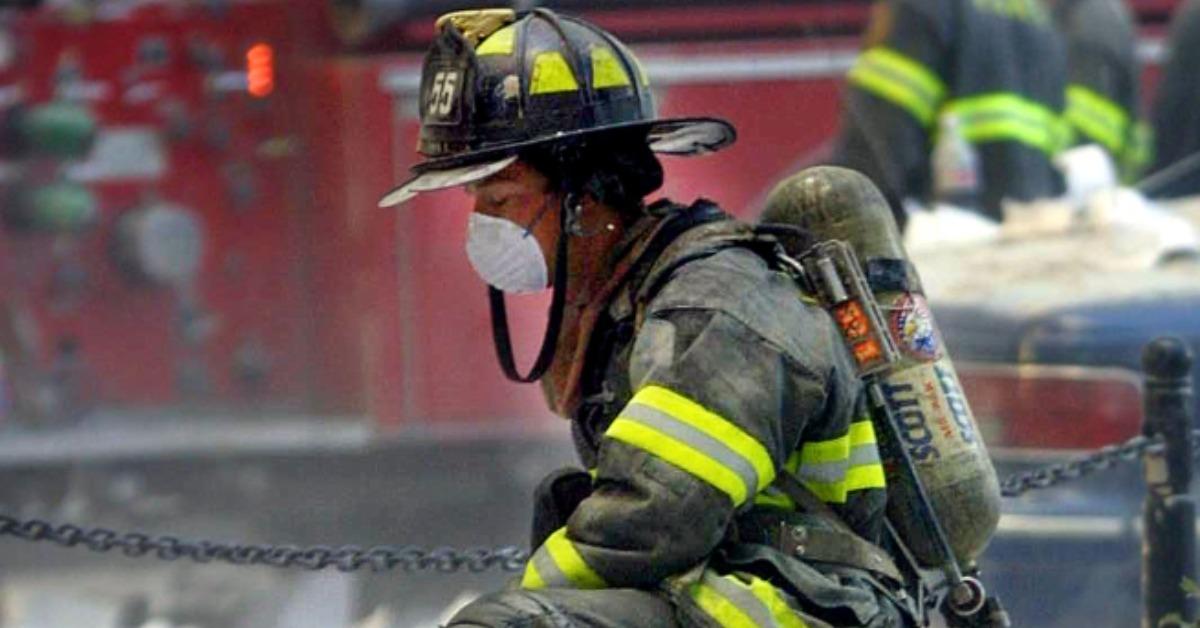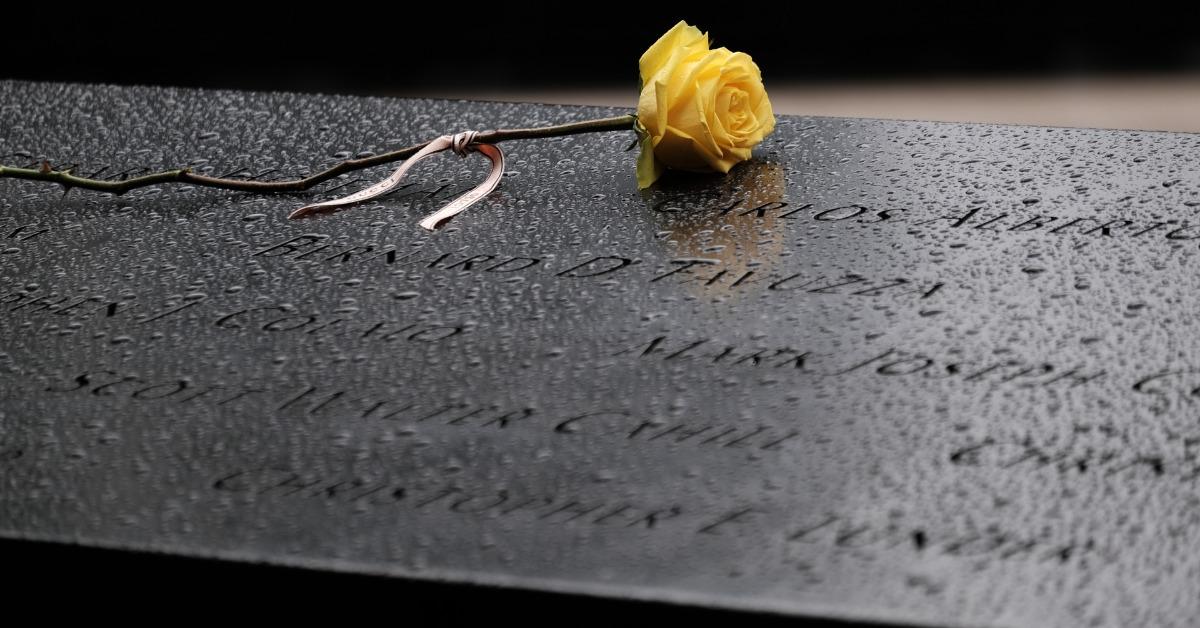20 Years After the 9/11 Terrorist Attacks, the Story of the "Man in the Red Bandana" Lives On
Published Sept. 10 2021, 1:15 p.m. ET

Throughout the course of the last 20 years in the U.S., countless stories, both good and bad, have emerged from what transpired on Sept. 11, 2001, at New York City's World Trade Center. The events of 9/11 largely shaped the nation's identity going forward, and the heroes who helped save and protect as many citizens as they could that day have become national treasures beloved by millions from coast to coast.
One of the most well-known stories of human triumph in the face of overwhelming adversity that day is the one of the "man in the red bandana," whose heroic efforts saved well over a dozen individuals from sure death. Even though it meant his own demise, this selfless individual's efforts ensured the safety of many others, and as such, he is remembered as a national hero.
With that being said, who exactly was the "man in the red bandana" and what was his story? Keep reading to find out.

Who was the "man in the red bandana"? He saved at least 18 people from the World Trade Center.
With his face covered by a red bandana that would define his legacy, 24-year-old Welles Crowther did what many would find unthinkable during the 9/11 terrorist attacks: He ran back into the burning buildings with the goal of saving as many people as he could.
The origin of the red bandana dates back much earlier in Welles' life, and according to his mother, Alison Crowther, per WBUR, it remained with him through many stages of his existence.
Alison explained to the outlet that their family used to dress up for church. Welles' father, the late Jeff Crowther, gave his son a handkerchief to keep in his suit jacket pocket "for show" as well as a red bandana which he kept in his back pocket "for blows." Welles decided to carry the red bandana around for years to come as a way to always stay connected to his father.
Jeff was a respected member of Upper Nyack's Empire Hook and Ladder Company No. 1. He and a young Welles would pass the time cleaning fire trucks, which instilled a passion for firefighting in him from a young age. By the time he turned 16, Welles was a junior member of the department, and a few years later he was granted full firefighter status.

At the time of the 9/11 attacks, Welles had already graduated from Boston College and was working as an equities trader for famed investment bank Sandler O'Neill, which was located in the South Tower of the World Trade Center. During his tenure at the company, Welles always kept his red bandana on his desk.
When the North Tower was struck, Welles sent a voicemail to his mother: "Mom, this is Welles. I want you to know I'm OK." Sadly, the reality would end up being quite opposite. When Welles' tower was struck shortly after, his firefighting instincts kicked in. He donned the red bandana and used his knowledge to establish a safe corridor down a stair bank for fellow tower workers to escape. His efforts helped save at least 18 individuals from the inferno that brought the buildings down.
However, Welles wasn't done just yet. He ran back into the South Tower yet again after saving that group of people, looking to find others whom he might be able to do the same for. Unfortunately, after he re-entered the building, it collapsed from structural damage, trapping him inside and leading to his death. His body was recovered later alongside NYFD firefighters working to do the same thing in the building's final moments.

Two decades later, Welles' story is still remembered as one of the most courageous efforts of that day.
Whether it be through the many documentaries that have emerged in the wake of the attacks, memorialization from presidents such as Barack Obama, or simply the continued lives and successes of those he saved, Welles' story has become an ingrained part of the events that transpired on 9/11. The courageous young man threw caution to the wind to save total strangers who otherwise may very well not be here today, and he paid the ultimate price for doing so.
"One of my greatest torments was that he would have been trapped and suffering like so many people were, and that would have been like the ultimate torture for Welles," Alison told WBUR. "So when we found out that he was actually free to make his final decisions about how he was going to behave at the attacks, that was a huge relief."